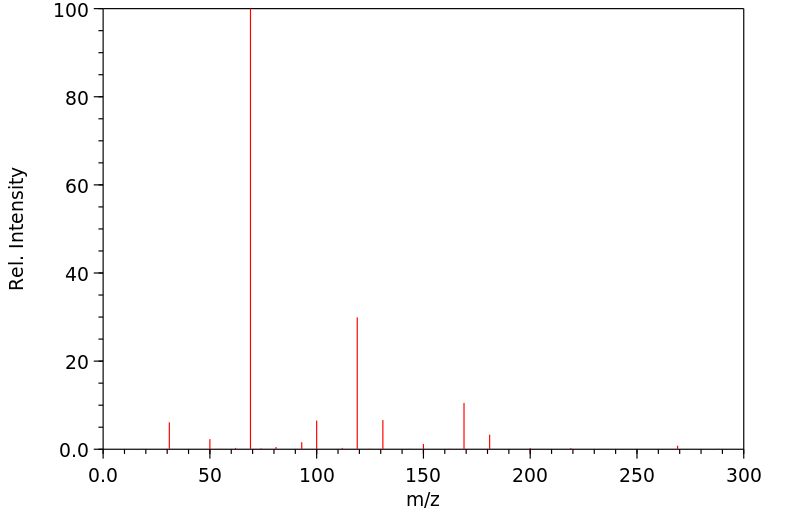Section 1: Product Identification
Chemical Name: Perfluoro-n-pentane, min. 98%
CAS Registry Number: 678-26-2
Formula: C5F12
EINECS Number: 211-647-5
Chemical Family: organofluorine compounds
Synonym: duodecafluoropentane, perfluoropentane
Section 2: Composition and Information on Ingredients
Ingredient CAS Number Percent ACGIH (TWA) OSHA (PEL)
Title Compound 678-26-2 100% 2.5mg/m3 (as F) 2.5mg/m3 (as F)
Section 3: Hazards Identification
Emergency Overview: Irritating to skin, eyes and respiratory tract.
Primary Routes of Exposure: Ingestion, inhalation, eyes and skin
Eye Contact: Causes slight to mild irritation of the eyes.
Skin Contact: Causes slight to mild irritation of the skin. May cause redness, itching and pain.
Inhalation: Irritating to the nose, mucous membranes and respiratory tract.
No specific information is available on the physiological effects of ingestion. May cause gastrointestinal
Ingestion:
irritation, nausea, and vomiting.
Acute Health Affects: Irritating to skin, eyes and respiratory tract.
Product contains fluorine which under certain conditions of use, decomposition, or metabolism, may generate
Chronic Health Affects: fluoride ion, causing, nausea, vomiting, labored breathing, hypocalcaemia, deterioration of bone and tooth
structure, kidney and liver damage.
NTP: No
IARC: No
OSHA: No
SECTION 4: First Aid Measures
Immediately flush the eyes with copious amounts of water for at least 10-15 minutes. A victim may need
Eye Exposure:
assistance in keeping their eye lids open. Get immediate medical attention.
Wash the affected area with water. Remove contaminated clothes if necessary. Seek medical assistance if
Skin Exposure:
irritation persists.
Remove the victim to fresh air. Closely monitor the victim for signs of respiratory problems, such as difficulty
Inhalation:
in breathing, coughing, wheezing, or pain. In such cases seek immediate medical assistance.
Seek medical attention immediately. Keep the victim calm. Give the victim water (only if conscious). Induce
Ingestion:
vomiting only if directed by medical personnel.
SECTION 5: Fire Fighting Measures
Flash Point: not applicable
Autoignition Temperature: no data
Explosion Limits: no data
Extinguishing Medium: none required
If this product is involved in a fire, fire fighters should be equipped with a NIOSH approved positive pressure
Special Fire Fighting Procedures:
self-contained breathing apparatus and full protective clothing.
Hazardous Combustion and If involved in a fire, this material may emit toxic organic fumes, and corrosive hydrogen and carbonyl fluorides.
Decomposion Products:
Unusual Fire or Explosion Hazards: No unusual fire or explosion hazards.
SECTION 6: Accidental Release Measures
Small spills can be mixed with vermiculite, sodium carbonate or other suitable non combustible adsorbent and
Spill and Leak Procedures:
swept up.
SECTION 7: Handling and Storage
Handling and Storage: Store in a tightly sealed container in a cool well ventilated area.
SECTION 8: Exposure Controls and Personal Protection
Eye Protection: Always wear approved safety glasses when handling a chemical substance in the laboratory.
Skin Protection: Wear protective clothing and gloves.
Ventilation: If possible, handle the material in an efficient fume hood.
If ventilation is not available a respirator should be worn. The use of respirators requires a Respirator
Respirator:
Protection Program to be in compliance with 29 CFR 1910.134.
Ventilation: If possible, handle the material in an efficient fume hood.
Additional Protection: No additional protection required.
SECTION 9: Physical and Chemical Properties
Color and Form: colorless liq.
Molecular Weight: 288.03
Melting Point: -120°
Boiling Point: 29°C
Vapor Pressure: no data
Specific Gravity: 1.63+/-0.06@25°C
Odor: none
Solubility in Water: insoluble
SECTION 10: Stability and Reactivity
Stability: (store cold)
Hazardous Polymerization: no hazardous polymerization
Conditions to Avoid: None
Incompatibility: active metals, strong oxidizing agents.
Decomposition Products: carbon monoxide, organic fumes, hydrogen fluoride, and carbonyl fluoride
SECTION 11: Toxicological Information
RTECS Data: Inhalation (rat); LC: 120 gm/m3.
Carcinogenic Effects: No data available
Mutagenic Effects: No data available
Tetratogenic Effects: No data available
SECTION 12: Ecological Information
Ecological Information: No information available
SECTION 13: Disposal Considerations
Disposal: Dispose of according to local, state and federal regulations.
SECTION 14: Transportation
Shipping Name (CFR): Non-hazardous
Hazard Class (CFR): NA
Additional Hazard Class (CFR): NA
Packaging Group (CFR): NA
UN ID Number (CFR): NA
Shipping Name (IATA): Non-hazardous
Hazard Class (IATA): NA
Additional Hazard Class (IATA): NA
Packaging Group (IATA): NA
UN ID Number (IATA): NA
SECTION 15: Regulatory Information
TSCA: Listed in the TSCA inventory.
SARA (Title 313): Title compound not listed.
Second Ingredient: none
SECTION 16 - ADDITIONAL INFORMATION
N/A








